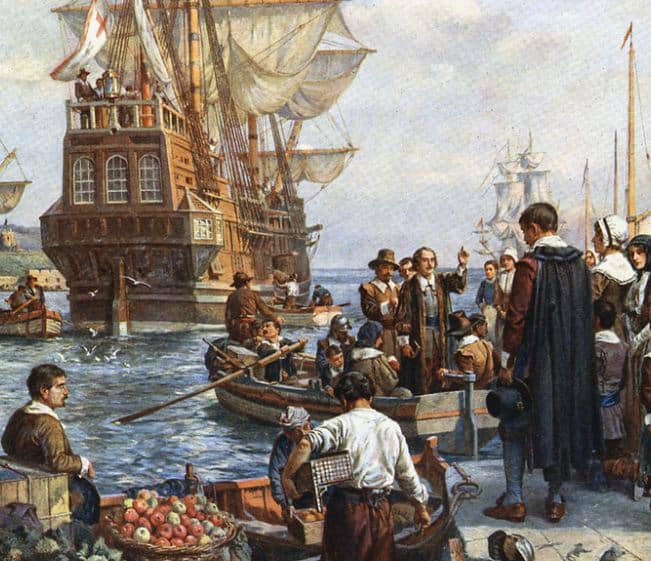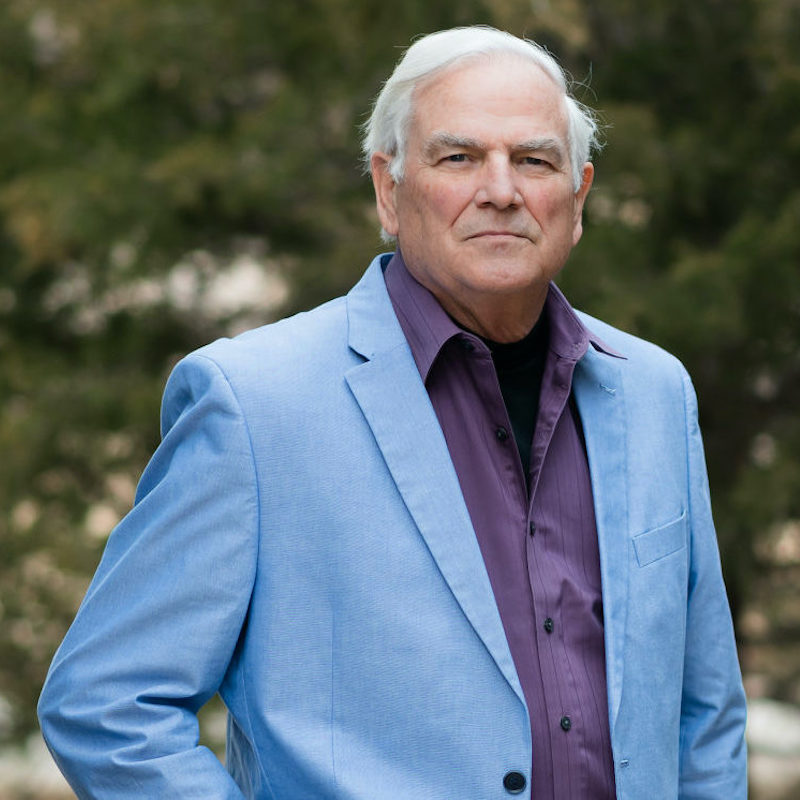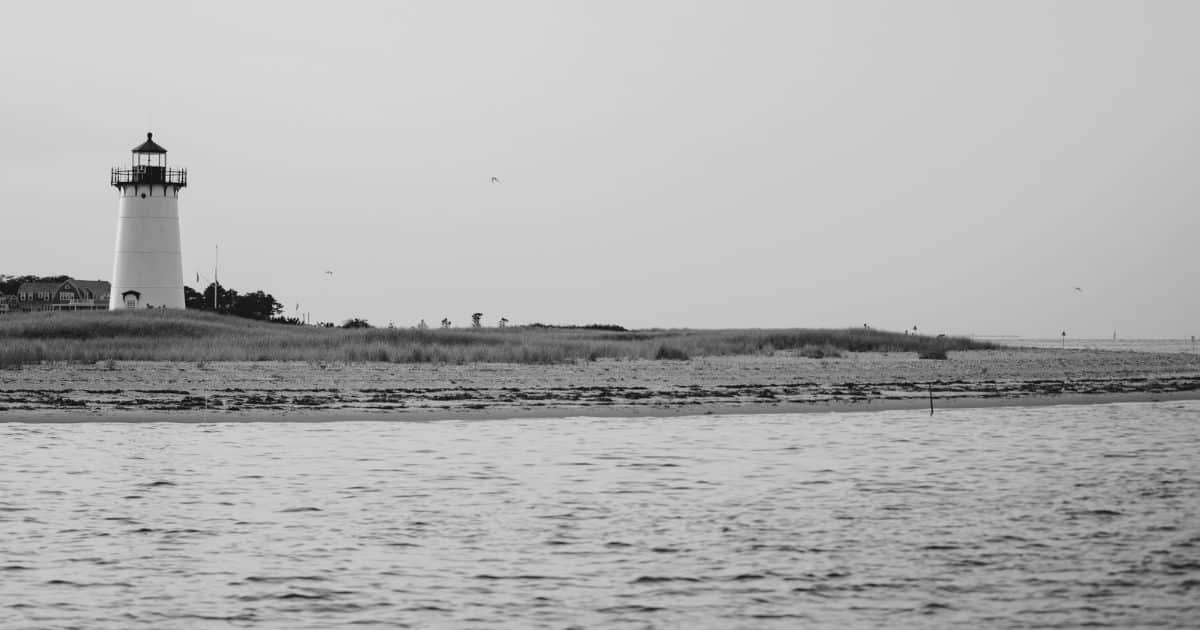In Parts I and II of this series uncovering the Deaf community of Martha’s Vineyard, we explored the presence of recessive genes for deafness that arrived in Massachusetts during the “great migration” of Puritan Separatists from England.
The Weald region in the County of Kent, England, was recognized for having a significant number of deaf residents due to the inheritance of recessive genes across generations.
Among the carriers of these genes were Thomas Lambert (also known as Lombard or Lumbard) and his wife Joyce. Of their ten children, Joshua Lambert (also known as Lombard or Lumbard) married Abigail Linnell, settling in Barnstable, Massachusetts.
Given the limited gene pool and the concentration of families from the Kent, England area in Pilgrim communities, the incidence of deafness was notably high. As is common in families with recessive genes for deafness, some children were deaf, some had normal hearing, and others were carriers of the recessive gene. Born to Joshua and Abigail in 1657, Jonathan was deaf. He initially assisted his father on the farm in Barnstable before becoming interested in Elizabeth Eddy, a young lady from Martha’s Vineyard.
Martha’s Vineyard

17th century map of land that became New England, New Jersey, and New York
Martha’s Vineyard was first discovered by the Norsemen in about the year 1000, who named it Vineland. In 1524, the Italian explorer Verrazano sighted the island and called it Claudia after the mother of the Queen of France.
Probably the first discoverer to leave any account of the island was Bartholomew Gosnold, of Falmouth, England. In 1602 he sailed for Virginia. According to Lang (2014), Gosnold encountered contrary winds that put him on a path a bit north of west across the Atlantic. As a result, he was the first Englishman to sail directly to the American coast and, in the process, saved nearly a thousand miles in distance and at least a week in sailing time.
Gosnold landed on a cape which he named Cape Cod for the abundance of codfish that he found there. Then, doubling back around the cape and sailing southward he landed on an island. After exploring it and finding it large, well wooded, and with many beautiful lakes and springs of the purest water, he named it Martha’s Vineyard, in honor of his first-born daughter, who had died in infancy, and after the luxuriant grape vines that grew on the island.
Developed by Thomas Mayhew and his successors, Martha’s Vineyard became a refuge for many, as it abolished slavery in 1783 and allowed land holdings by anyone who could afford them. Later it became a major whaling center. By 1870 whaling had ceased, and eventually it became popular with tourists and with people who wanted summer vacation homes.
During the Colonial period and in the 19th century connections between the mainland and the Vineyard were minimal. Getting to the island was so difficult that once there, most people stayed on and married within the small, not very genetically diverse population.
Lambert’s Cove
 Elizabeth’s father, John Eddy, arrived on Martha’s Vineyard with his father, Samuel, who was tasked by the Plymouth Colony to develop the island. John, a prominent landowner in the Tisbury area, eventually played a role in Jonathan Lambert’s relocation to the Vineyard, where Jonathan and Elizabeth were married in 1683.
Elizabeth’s father, John Eddy, arrived on Martha’s Vineyard with his father, Samuel, who was tasked by the Plymouth Colony to develop the island. John, a prominent landowner in the Tisbury area, eventually played a role in Jonathan Lambert’s relocation to the Vineyard, where Jonathan and Elizabeth were married in 1683.
Jonathan Lambert participated in the ongoing war between France and England, joining Sir William Phipps’s ill-fated 1690 expedition to Quebec City, the capital of New France. Although Jonathan received land in Narragansett township (now Gorham, Maine) for his service, he grew disillusioned with the military and moved his family to Martha’s Vineyard in 1692. They settled in the Tisbury area, close to Elizabeth’s family.
In 1694, Jonathan acquired land bordering Great James Pond from the Wampanoag tribe’s Indian Sachem Josias Wampatucke. This region has since been known as Lambert’s Cove, preserving his legacy.
Despite an uneventful life described by Lang (2014) as Jonathan being a “deaf mute” with limited records of public activities, he briefly returned to military service as the master of the brigantine Tyral, a slave ship transporting slaves from the Quebec area. Jonathan lived in Lambert’s Cove, working as a carpenter until his death. The Lambert family continued to thrive on the inherited acres, solidifying the Lambert name with the region.
The Rise of the Deaf Population on Martha’s Vineyard
The migration of individuals carrying a deafness gene from the Weald in Kent to Scituate, near Plymouth and Cape Cod Bay, stands out as a well-documented phenomenon in the deaf experience during the American colonial period.
Many of these emigrants eventually settled on Martha’s Vineyard, where a unique sign language developed over time and was embraced by both deaf and hearing islanders. Unlike other communities, deaf individuals on Martha’s Vineyard not only formed families but also held public offices and conducted business in sign language during town meetings.
Jonathan and Elizabeth’s family marked the introduction of congenital deaf mutism on the Vineyard, initiating a cycle that endured for two centuries. According to Burke (2014), the prevalence of deafness increased significantly during the 19th century, as evidenced by census data. For example, in 1817, two families had a total of 7 deaf members, and by 1855, the number had risen to 17, with an additional 4 in nearby Tisbury.
Providing perspective, while the mainland U.S. had a deafness frequency of about 1 in 6000 people, on the Vineyard, it reached as high as 1 in 155, escalating to 1 in 25 in Chilmark and an astonishing 1 in 4 in the town of Squibnocket.
The primary mode of communication for these deaf residents combined elements of French Sign Language and the Kent Sign Language from Kent, England. Sign language was ingrained in Martha’s Vineyard’s daily life, used routinely even in the absence of deaf individuals. Interpreters facilitated communication in church, town meetings, and other gatherings. Deafness was so prevalent that the community integrated deaf individuals as equals, including them in conversations through the use of sign language. In Chilmark, learning sign language was a requirement for community integration.
The cycle of a predominantly deaf population on Martha’s Vineyard began to shift with the advent of Deaf Education in the United States. As educational opportunities for the deaf expanded on the mainland, many deaf families left Martha’s Vineyard, leading to a decline in the deaf population. While it lasted, the first integrated deaf population in the United States had created a utopian community for the Deaf.
References:
- Banks, C. (1911). The History of Martha’s Vineyard, Dukes County, Massachusetts: Town annals.
- Lang, H. (2014). The Deaf History Reader. Gallaudet Press.
- Johnson, S., (2010). The Chilmark Deaf Community on Martha’s Vineyard Island.
- Norton, H. & Pyne, R. (1923). History of Martha’s Vineyard.
- Burke, J. (2014). Deaf History: Martha’s Vineyard. About Health.
About the author

Robert M. Traynor, Ed.D., is a hearing industry consultant, trainer, professor, conference speaker, practice manager and author. He has decades of experience teaching courses and training clinicians within the field of audiology with specific emphasis in hearing and tinnitus rehabilitation. He serves as Adjunct Faculty in Audiology at the University of Florida, University of Northern Colorado, University of Colorado and The University of Arkansas for Medical Sciences.
**this piece has been updated for clarity. It originally published on December 2, 2014






